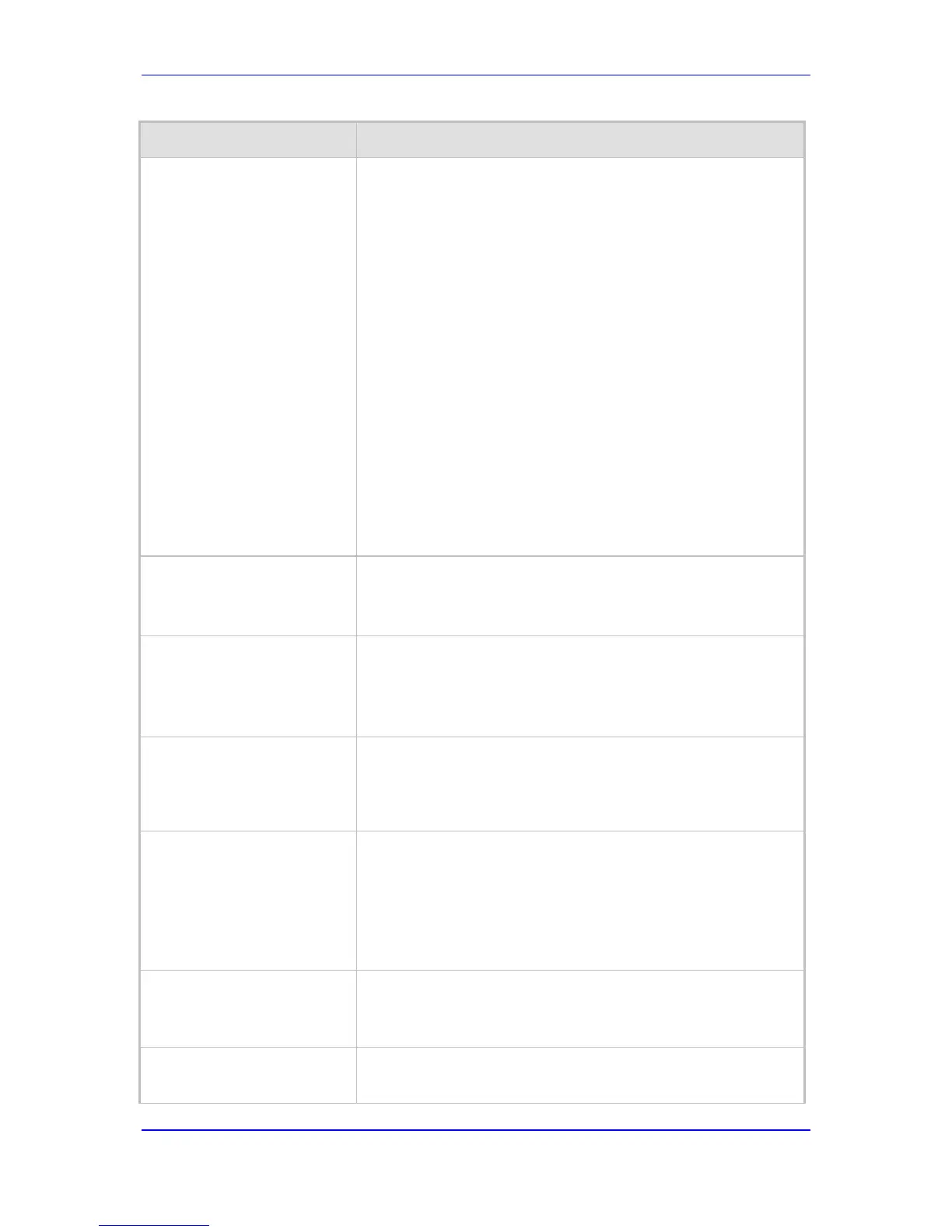[4] 12000 = 12.0 kbps
[5] 14400 = 14.4 kbps (default)
[6] 16800bps = 16.8 kbps
[7] 19200bps = 19.2 kbps
[8] 21600bps = 21.6 kbps
[9] 24000bps = 24 kbps
[10] 26400bps = 26.4 kbps
[11] 28800bps = 28.8 kbps
[12] 31200bps = 31.2 kbps
[13] 33600bps = 33.6 kbps
Notes:
The rate is negotiated between both sides (i.e., the device
adapts to the capabilities of the remote side). Negotiation of the
T.38 maximum supported fax data rate is provided in SIP’s
SDP T38MaxBitRate parameter. The negotiated
T38MaxBitRate is the minimum rate supported between the
local and remote endpoints.
Fax relay rates greater than 14.4 kbps are applicable only to
V.34 / T.38 fax relay. For non-T.38 V.34 supporting devices,
configuration greater than 14.4 kbps is truncated to 14.4 kbps.
Web: Fax Relay ECM Enable
EMS: Relay ECM Enable
CLI: ecm-mode
[FaxRelayECMEnable]
Enables Error Correction Mode (ECM) mode during fax relay.
[0] Disable
[1] Enable (default)
Web: Fax/Modem Bypass
Coder Type
EMS: Coder Type
[FaxModemBypassCoderTyp
e]
Determines the coder used by the device when performing
fax/modem bypass. Typically, high-bit-rate coders such as G.711
should be used.
[0] G.711Alaw= (Default) G.711 A-law 64
[1] G.711Mulaw = G.711 µ-law
Web: Fax/Modem Bypass
Packing Factor
EMS: Packetization Period
CLI: packing-factor
[FaxModemBypassM]
Defines the number (20 msec) of coder payloads used to generate
a fax/modem bypass packet.
The valid range is 1, 2, or 3 coder payloads. The default is 1 coder
payload.
CLI: fax-modem-telephony-
events-mode
[FaxModemNTEMode]
Determines whether the device sends RFC 2833 ANS/ANSam
events upon detection of fax and/or modem Answer tones (i.e.,
CED tone).
[0] = Disabled (default)
[1] = Enabled
Note: This parameter is applicable only when the fax or modem
transport type is set to bypass or Transparent-with-Events.
Web/EMS: Fax Bypass
Payload Type
CLI: fax-bypass-payload-type
[FaxBypassPayloadType]
Defines the fax bypass RTP dynamic payload type.
The valid range is 96 to 120. The default is 102.
EMS: Modem Bypass Payload
Type

